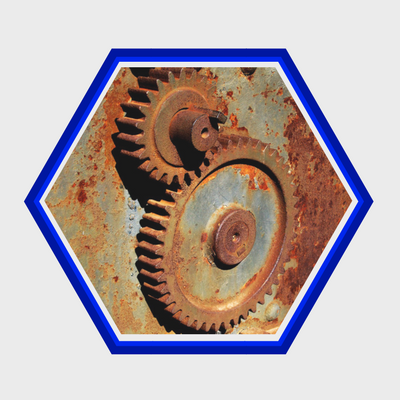You asked: Is Rust Contagious?

.png)
.png)
A customer recently had an issue where two components made of different materials had both rusted and asked us whether or not Rust was contagious. The short answer to this is No. Rust will not spread from one component to another and generally the reason that components that are close together will both rust is that they are both in the same conditions.
What Is Rust?
Although a widely used term to refer to corrosion of metal, Rust specifically refers to the reaction between Iron and Oxygen that forms Iron Oxide. Iron Oxide weakens the bonds of the metal at a molecular level causing to become weak and decompose. Any metal which has an element of Iron in its makeup is prone to rusting, including many grades of Steel. Materials such as Copper and Silver will Tarnish rather than Rust, but both of these terms refer to the metal being affected by corrosion.
What Causes Rust?
Rust can take place in a wide variety of environments and can be caused by oxygen and moisture attacking the metal. On a molecular level the electrons from the metal are being ‘sucked up’ by the oxygen. The water in the atmosphere essentially accelerates the flow of electrons. This process is known as ‘Redox Reaction.’ The three key elements that cause rust are oxygen, humidity and water.
Types of Rust?
“Red” Rust is often the result of a metal's exposure to air and moisture, quite often in a salt environment. This type of rust is most often caused by the environment that the component must operate in and will be uniform throughout the part. Red Rust in by far the most commonly found kind of Rust and is also known as ‘Hematite.’
“Yellow” Rust occurs in environments with higher levels of moisture, and is often found in applications that involve standing or still water. Yellow Rust is not uniform in the way that Red Rust would be and will be more prominent in recessed areas. Yellow Rust is often described as ‘running and dripping'.
“Black” Rust can usually be identified as a thin black film, resembling almost a stain on the metal. Black Rust is the result of oxidation occurring in a low oxygen environment, most often this form of rust will actually appear where the metal has a coating/finishing protecting the metal which prevents oxygen from reaching the surface. Black Rust is sometimes referred to as “Good Rust” as it does not propagate as rapidly nor corrode as quickly.
A similar type of corrosion to Rust would be “Pitting.” This takes the form of small cavities within the metal and can be one of the most damaging to the component. Pitting is often difficult to detect and one of the more damaging forms of corrosion. It occurs where the thin oxide film is damaged and doesn’t re-passivate. This results in the pit cavities which can rapidly perforate the wall thickness of the metal.
Preventing Rust
Rust is widespread and will affect nearly every metallic component albeit at different rates, this is one of the core reasons that metal finishing is used in nearly every industry. By coating a component, you essentially seal off the metal from the environment and thus help protect it. Metals like Aluminium and Iron will corrode much faster than Steels and Copper. Precious metals are called such as they are highly resistant to corrosion and these include Silver and Gold. The base metal and the environment that the component must function will determine as to which metal finishing option is best suited to prolong the part’s life.
Silchrome Plating are based in Leeds, and are fully ISO 9001 and 14001 certified. We offer a very wide range of metal finishing processes including electro-plating, anodising, phosphating and much more. Get in touch today to see how we can extend the life of your components.




